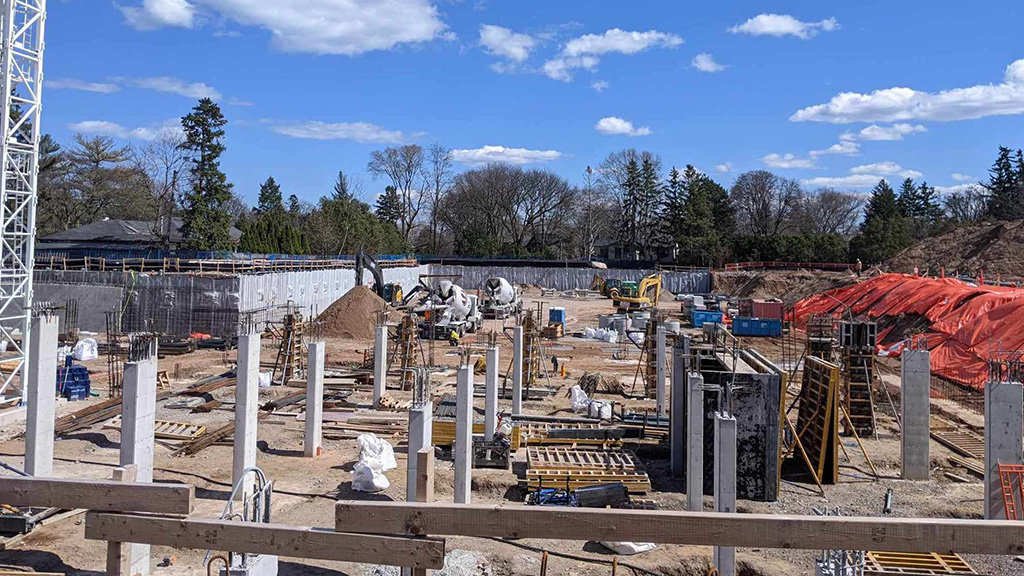A new report from lays out in stark relief the dimensions of the problems ║┌┴╧│╘╣╧═Ї will have in reaching its new-homes goals over the next decade.
The report highlights one piece of the puzzle in particular тАУ lack of an adequate construction workforce to build the new homes.
BuildForce is forecasting the residential construction sector will need to grow its construction workforce by 83 per cent above 2023 levels this decade to meet CMHC housing targets, leaving experts asking: are the targets being floated even remotely attainable?
тАЬDo I expect we can double the number of workers we have in ║┌┴╧│╘╣╧═Ї working on housing in the period? No, but that gives us a sense of the magnitude (of the challenge),тАЭ said Kevin Lee, CEO of the (CHBA).
тАЬThe scale that has been discussed is going to be extremely challenging, if not impossible, for ║┌┴╧│╘╣╧═Ї to meet for a variety of reasons, some being labour and labour force, some being supply chain and some being cost. All three of those combined have just made it very challenging,тАЭ remarked Matti Siemiatycki, director of the at the University of Toronto.
тАЬThe labour force is clearly one of the issues.тАЭ
Different targets, all elusive
The supply targets have been calculated in slightly different terms and time frames.
The CHBAтАЩs February Sector Transition Strategy paper calculated that the federal government has determined ║┌┴╧│╘╣╧═Ї needs to build 3.5 million more housing units over and above the 2.3 million that are normally built during the next decade.
The Justin Trudeau governmentтАЩs new Housing Plan, unveiled April 12, set a target of 3.87┬аmillion new homes by 2031.┬а
тАЬThis includes a minimum of two┬аmillion net new homes, on top of the forecast of 1.87┬аmillion being built anyway by 2031,тАЭ stated the policy document.
BuildForceтАЩs construction workforce growth requirement forecast of 83 per cent represents the number of workers needed to build 3.5 million additional housing units this decade over and above what they normally build; thatтАЩs 1.04 million total residential workers, stated the April 10 report.
Housing starts would rise from just over 233,000 units in 2023 to approximately 662,000 units by 2033.
The non-residential side, meanwhile, will experience significant induced demand over that period. Those workers build and install the essential infrastructure that support the construction of new housing. BuildForce estimates that sector will require 19 per cent more workers above 2023 levels.
тАЬWeтАЩre going to have to get creative with solutions,тАЭ said Bill Ferreira, executive director of BuildForce. тАЬIt clearly cannot just be business as usual if we’re hoping to come anywhere close to meeting these targets.тАЭ
Lee said the sector will have to actively recruit Canadians into the skilled trades and residential construction sector, reform the immigration system to allow in new Canadians who have the skills and aptitude to build homes, and bolster innovation and support productivity through de-risking investment in factory-built systems.
Workforce one of many challenges
The CHBA said in its sector transition strategy paper the sector has to create solutions in the financial, labour, policy and productivity spheres to reach ║┌┴╧│╘╣╧═ЇтАЩs housing targets.
Lee suggests labour recruitment is not necessarily the first problem to tackle.
тАЬThis comprehensive approach of coming at it from all angles really is essential. And while the labour side of it is hugely important to address, even better than that is creating the financial capacity for Canadians to be able to afford to buy homes,тАЭ he said.
тАЬJust the flat-out ability to buy, finance and access mortgages is critically important. Then as that starts to come together, things like the skilled worker shortage do start to become critical as well.тАЭ
Lee said something will have to give in the drive to reach forecasts. In his view itтАЩs the timelines that will have to be extended.
Siemiatycki said all pieces of the puzzle need to fit. So when stakeholders embrace modular housing as a solution, they have to realize there are issues to overcome in that sector as well.
тАЬWe’ll need to see if it can really be productive at scale,тАЭ he said.
тАЬModular struggles with the building cycles. In good times it can work pretty well, and factories can scale up, but when they have to scale down they have much more capital, much more physical infrastructure, so they’re more prone to the business cycles than a traditional stick builder who can scale up and scale down with less overhead.тАЭ
Follow the author on X/Twitter .












At the UNB Off-site Construction Research Centre, we are currently working on a project to assess capacity and capability of the modular (or what I prefer to call the Industrialized Construction) sector with the ultimate goal of helping companies scale up to meet demand. As mentioned towards the end of the article, scaling up comes with some risk but there are many companies across the country who have been able to scale up when needed and mitigate risks associated with this.
The government can help by 1) creating sustainable demand, 2) helping manufacturers scale up (grants or interest free loans to improve efficiencies and offer training across the whole sector – owners, developers, lenders, designers, etc. as well) and 3) removing barriers presented through policies and standards to using industrialized construction methods (IтАЩd argue this is the most important).
The UNB OCRC and many of our colleagues both in industry and academia are working to help achieve this.